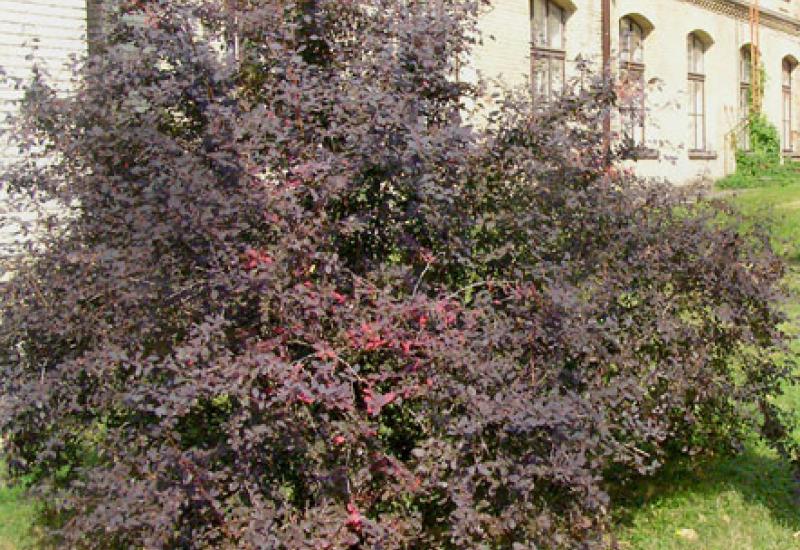In recent years, many city residents were drawn to the dacha plots: try a new business - gardening, horticulture - and benefit from it, and perhaps pleasure. Since the last prevailed and now academics, teachers, employees, and polytechnics are no exception, have become experts in the design and suburban landscape. They are well-versed in difficult names of plants, their characteristics and advantages. They can immediately advise dozen exotics that will decorate the garden throughout the year. "KP" also decided to join the craze and talk about the "delicious" plant known since childhood, still not widely used as an ornamental. So, there are tulips, cork, soap, breadfruit and others. A caramel tree?
A caramel tree in NTUU "KPI" is growing to the right of the rector's wings. The taste of its fruits can not be confused with any others: this sour-sweet red berries - caramel-Barbariska. Therefore, the tree is called barberry, Berberis, Kislyanka, sour blackthorn. Barberry belongs to the family Borberidaceae, which has more than 170 species, which differ in size, coloration of leaves, flowers and fruits. Its brightness barberry are different from other trees and shrubs, so gardeners like to use them as a hedge - elegant and practical. The tree reaches a height of 2.5-3 m, tolerates pruning, plant for 6-7 years can be given any decorative form.
Barberry grows on the shaded edges, sandy hills and along rivers. It cannot tolerate wet areas with stagnant moisture. It is resistant to frost, undemanding to soil. It can be found on all continents except Australia and Antarctica, but it is widespread mainly in the northern hemisphere, where it is called "northern Lemon". Most often in landscaping and medicine it is used common barberry (Berberis vulgaris L.) - deciduous shrub branched, which is home to the Crimea and the Caucasus. "Barberry" in Arabic means "with petals like a seashell."
It blooms in late May, pleasing look with fragrant flowers - bells. Of these, it is collected sweet honey. In September and October ripen ruby-red fruit are hanging in luxurious necklaces and give the plant a particularly decorative appearance. Berries are stored in the branches almost until the spring. And they are not afraid of frost and thaw are not afraid - as jewelry pieces, woven in black plexus branches.
"Caramel tree" in addition to an attractive appearance is well known also with its healing power. It was well known in ancient India. There barberry berries were used as a means of cleansing the blood. In ancient Greece and Rome barberry was growing in every garden, as believed: this plant brings happiness and good luck. In Tibetan monasteries, it was considered a plant that prolongs youth. In Russia, too, the healing properties of barberry were known and used: tincture of bark, stems and roots were used to quench bleeding, removal of inflammatory processes, treatment of colds.
Scientists have found that barberry berries contain large amounts of malic, citric, tartaric and ascorbic acid. Berry juice is able to excrete toxins, slow the aging process. Fresh fruit is recommended to use in diseases of the liver, inflammation of the kidneys, bladder, rheumatism. All parts of barberry contain alkaloids berberine, which has choleretic properties.
Barberry fruits are widely used in cooking. They are used to make jams, compotes, jellies, candy toppings, juices and syrups, wines and liquors, they can be pickled and salted. The dried berries are used as a seasoning for meat dishes.
From its roots and bark sometimes still it is produced a yellow dye for wool, linen, paper, leather. It is the best dye for Arab carpets.

